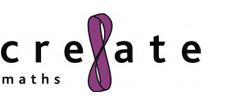Linking of mathematics to construction and engineering
There is a wide range of mathematical topics used in construction and engineering.
Constructions takes the mathematical description of the word construction, exploring mathematical constructions and scale diagrams in different contexts; skills which are vital when working with plans. The resource also stresses the importance of accuracy in calculations. This is a good lead in to the resource Architect's Skills in which students have to describe 3D models in two dimensions and decode plans. Mathematics From Outdoors and Outdoor Trigonometry continue the theme exploring more complex mathematical topics such as Pythagoras' theorem, trigonometry and circles. Building a Town and Building Silos are practical based activities in which students realise a three dimensional structure based upon two dimensional planning.
Sewage Tunnels, How Much Waste and How Much Sewage are part of a suite of resources exploring the mathematics used in some of the unseen areas of construction. Activities provides a context for work on volume of three dimensional shapes, approximation, estimation and a consideration of the wider implications of construction.
The Mathematics of Escalators on the London Underground provides a context for consideration of rates and speed. The list contains two short videos in which a Structural Engineer and a Civil Engineer talk about the jobs they do and the mathematics they use.
Constructions
This resource looks at the military’s use of constructions and mathematical accuracy in warfare and peacetime defence.
Students are asked to draw constructions to represent how the military target hostile forces, stressing the importance of accuracy in calculations which consider projected paths. They will need to be able to construct scale drawings, an angle bisector, a perpendicular bisector, a triangle and a variety of loci.
Architect's Skills
This activity Architect's Skills is designed to develop the process skills involved in understanding and making sense of mathematical information. Students have to give unambiguous descriptions to enable their partner to build an identical copy of a hidden shape, whilst the partner has to listen and interpret the descriptions accurately.
Different views is designed to engage pupils in visualising a three dimensional object from limited but sufficient information, given in code, for the front, side and plan views of shapes. Students then progress to Decoding plans, where they are invited to build 3-D models from the codes for each shape.
Motivating Maths at GCSE: Outdoor Trigonometry
In this video Andy Grice, teacher of mathematics at Brune Park Community College in Gosport, delivers a practical lesson on trigonometry to a class of GCSE students. Working in groups, they first estimate the height of four buildings on the school site. They then measure actual distances and angles which are used, back in the classroom, to calculate the heights of the buildings and compare these to their original estimates. Feedback from the students is positive and Andy and his colleagues analyse the success of the lesson and discuss some of the issues that emerged.
Building a Town
In Building a town, students are encouraged to consider the mathematical shapes which form the net of a building. Some simple models are shown and students could use these to construct their nets, before building the models themselves.
This activity could be extended so that students produce models of buildings from their area. Buildings with sloping roofs will offer opportunities for experimenting, measuring, or applying Pythagoras’ theorem, in order to draw accurate nets, whilst conical roofs could provide opportunities to work with the formula for the circumference of a circle.
Building Silos
This task offers pupils the opportunity to develop their personal learning and thinking skills. It involves using recycled materials to construct a scale model of a silo and is well suited to group work. The task can be extended for more able students by investigating the resizing of their model to accommodate an increased capacity.
Topics covered by this task include scale, ratio, measurement, volume of cylinders, unit conversions, graphs and substitution into formulae.
Heat Loss from Buildings
This resource asks the question: how can the most efficient design be determined, taking both building and running costs into account?
The introduction considers the thermal conductivity of different materials graphically to help decide which material should be used. There follows an explanation of the concept of kilowatt hours. A video accompanies the resource explaining thermal conductivity.
The mathematics covered in this activity is:
• Solve problems involving area, perimeter and volume
• Use scale drawings
• Work with formulae for the areas and perimeters of plane shapes
• Work with formulae for surface areas and volumes of regular solids
• Be able to draw graphs by constructing a table of values
• Be able to extract information from a graph
Rigid Structures
This activity looks at the exciting mathematics connected with the regeneration going on in our cities. The three activities are based around the construction of rigid structures and provide opportunities for practical work and mathematical problem solving.
Finding rigidity introduces students to the principle of rigidity and provides the opportunity to study images of buildings and identify what makes them rigid, before investigating local buildings of their own choosing.
Testing rigidity and Bracing squares engage students in building structures using geostrips and challenges them to apply their experience to predict if diagrams of structures are rigid, before building them to test their conjectures.
Sewage tunnels
This activity, from the Institution of Engineering and Technology (IET), challenges students to use their mathematical skills to calculate the critical dimensions of the tunnel that will be built. It could also be taught in design and technology or engineering, with the emphasis on how the development will affect the quality of life and how it could be realised.
The activity challenges students to move beyond an ‘out of sight, out of mind’ approach to sewage as they use and develop their mathematical process skills within the real-world contexts presented. This activity provides a context for work on volume a cylinder, volume of a cone, area of a circle and surface area of a cone.
This resource is supported by a full set of activities in the Shifting Sewage collection and by the video Shifting Sewage.
Underground sewage systems
This activity challenges students to calculate the dimensions of an underground tunnel system. Students are encouraged to move beyond an ‘out of sight, out of mind’ approach to sewage as they use and develop their mathematical process skills within the real-world contexts presented.
Key ideas include:
• human impact
• environment
• water use
• waste water
• calculations
• volume of cylinder
• volume of cone
• approximation
• estimation
This resource is supported by a full set of activities in the Shifting Sewage collection and by the video Shifting Sewage.
Analyse sewage tunnel design
This activity follows on from the How Much Waste? activity and provides an engaging task to continue the learning focusing on the link between sewage and the underground tunnel system. It encourages students to think about the role of engineers in providing us with healthy sanitation and waste-water disposal systems.
Learning outcomes include:
• To develop an insight into the representation of large volumes
• To determine and select variables, then apply mathematical formulae to solve real-life problems
This resource is supported by a full set of activities in the Shifting Sewage collection and by the video Shifting Sewage.
Structural Engineer
Katie Symons creates modern buildings and structures. This Department for Education video clip demonstrates the importance of STEM subjects in achieving a career in structural engineering.
Katie describes how her work involves designing buildings, which involves a great deal of science, engineering and mathematics skills. She explains how her role is to work with architects to help make their building designs come to life. This involves seeing the whole project from the early design stages to the final look of the building.
Katie says, "It's a really good way of using maths and science in designer buildings. I use maths and physics every day in my job when I'm designing building structures.''
The company she works for is currently involved in the re-development of Anfield Football Stadium, designing the biggest theme park in the world in Dubai and designing a skyscraper in St Petersburg.
A Bridge Too Many
A Bridge too Many is a set of teaching materials which offer a cross-curricular approach to learning about engineering. The context for the activities is a challenge based on a large model bridge that has been pre-constructed using prefabricated components, with weak pins joining the structure together. The challenge is to remove the bridge from over a railway without dropping anything on the tracks.
Students, working in teams, have to use the information supplied (drawings, technical information on the weight, strength, etc., of the girders), information on how to calculate the loads in a pin-jointed framework, information on the weights of the various pipes, conveyor components, cladding sheets, technical data on a range of cranes and so on, to plan the dismantling and removal of the bridge. They should prepare a detailed report to the Railway Safety Officer (the Tutor), who approves or rejects it. Students have a set of components available if they wish to construct a model to confirm the results of their calculations experimentally.
Once the plan has been prepared, the team is required to remove the model bridge from over the railway, without accident. Successful completion of the task can result in a form of certification for the students.
The Mathematics of Escalators on the London Underground
This resource shows the application of mathematics for the operation of escalators on the London underground. Students consider a variety of issues which include passenger numbers and flow, as well as carbon emissions, escalator speed and energy efficiency.
Detailed notes and examples are provided and there are extension activities for students to complete, together with learning outcomes and assessment criteria.







